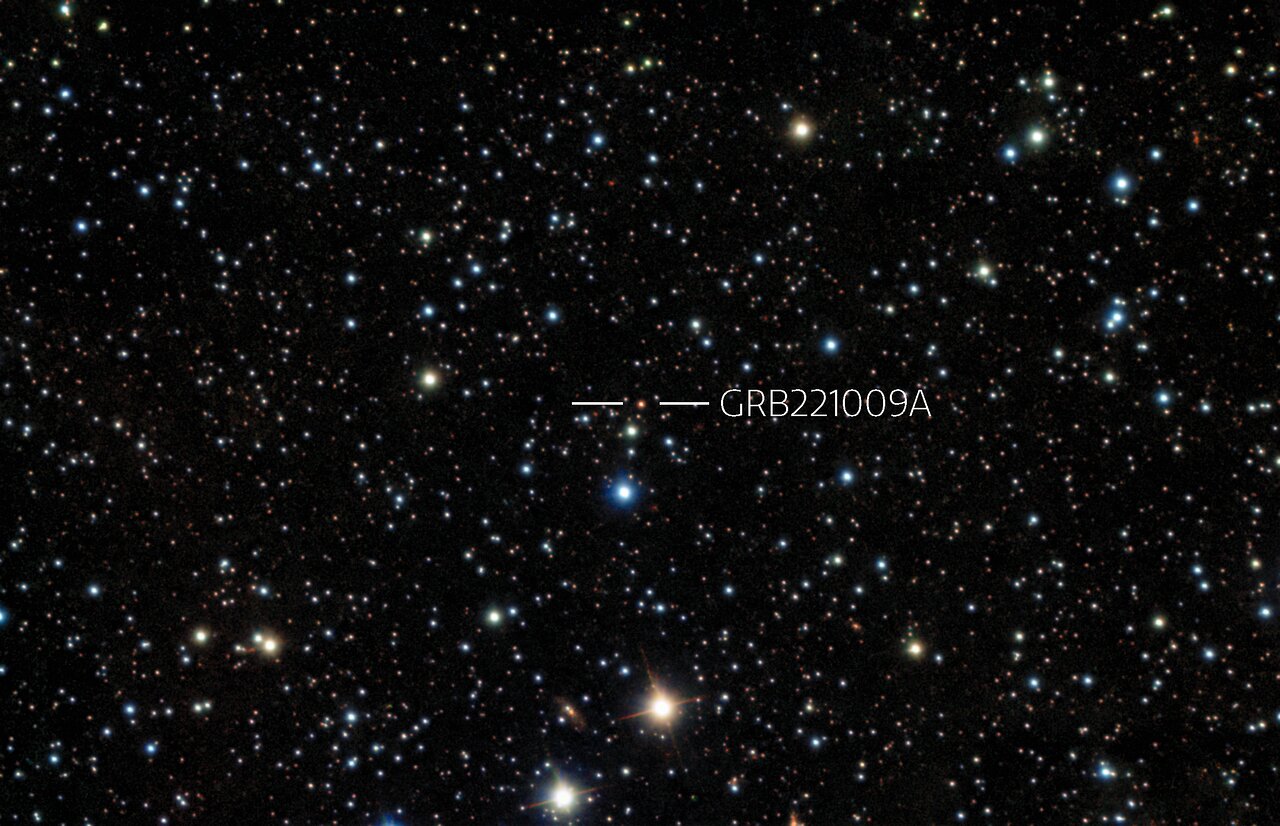NOIRLab Stories | 2023 Jun 14
One of the closest and most powerful gamma-ray bursts (GRBs) ever seen could change the way that we think about these titanic explosions.
A team of astronomers using the Gemini South telescope, one half of the International Gemini Observatory operated by NSF’s NOIRLab, have observed the ‘brightest of all time’ long gamma-ray burst. Using Gemini South's Multi-Object Spectrograph (GMOS) instrument, the team found that although GRB 221009A exhibits a jet structure as rare as it is bright, its associated supernova is surprisingly ordinary.
On 9 October 2022 a flash of high-intensity gamma rays was detected by NASA’s Swift satellite coming from a galaxy 1.9 billion light-years away. Dubbed the ‘BOAT’ — the ‘brightest of all time’ — GRB 221009A was so exceptionally powerful that it actually sent shockwaves through Earth’s ionosphere, the outer layer of our planet’s atmosphere. ...
While most GRBs of this type take place much farther away, GRB 221009A’s relative proximity has given astronomers an unprecedented look into its central engine. In fact, the combination of intense brightness and closeness is so rare that astronomers don’t expect to see another GRB like it for another 1000 years on average. ...
Using the Gemini South telescope, one half of the International Gemini Observatory operated by NSF’s NOIRLab, authors on two papers about this discovery, O’Connor and Srinivasaragavan, observed the explosion associated with GRB 221009A. One paper examines the ‘opening angle’ of the GRB jet, which can provide information about the process that emits the gamma rays, while the second paper described the search for the GRB’s optical counterpart — a supernova. ...
The supernova SN 2022xiw turned out to be surprisingly underwhelming and not unlike other supernovae. ...
A Structured Jet Explains the Extreme GRB 221009A ~ Brendan O'Connor et al
- Sciance Advances 9(23) (07 Jun 2023) DOI: 10.1126/sciadv.adi1405
- arXiv > astro-ph > arXiv:2302.07906 > 15 Feb 2023
with the Extremely Energetic and Nearby GRB 221009A ~ Gokul P. Srinivasaragavan et al
- Astrophysical Journal Letters 949(2):L39 (2023 Jun 01) DOI: 10.3847/2041-8213/accf97
- arXiv > astro-ph > arXiv:2303.12849 > 22 Mar 2023 (v1), 29 May 2023 (v3)
NOIRLab Photo Release | Gemini Observatory | 2022 Oct 14
viewtopic.php?t=42683
viewtopic.php?t=42685
viewtopic.php?t=42977&p=330101#p330101
viewtopic.php?t=43070

